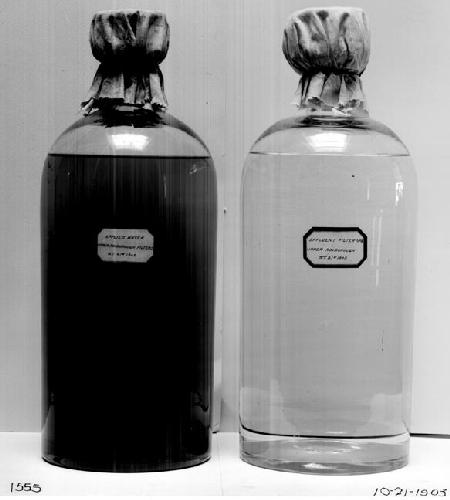A seven-part course

This 7-part course is worth your time. Really.
PWD web editor Justin Martin tells you why.
A little explanation might be necessary here.
You can make the argument, without a whole lot of strain, that the viability of a city goes hand-in-hand with its ability to manage its water supply. If a city’s residents don’t have ready supplies of clean water, and the city can’t get rid of the wastewater that builds up – from human use, rainfall, or flooding – that city’s not going to last very long. Most people don’t want to live in a swamp, after all, and the proud people that do live in swamps not only have the expertise necessary to thrive in that environment but, most likely, also live in houses, either on stilts or pontoons, that are specially designed to support such a lifestyle.
Or, maybe, houseboats, which, again, might work just fine in Louisiana’s Atchafalaya Basin but would probably be a little out of place in Philadelphia’s Kensington neighborhood.
It’s easy to take public utilities for granted. We don’t tend to walk around our living rooms at night going, “I’m so thankful for electricity!” We just sit down and figure out what we want to watch – or read, or listen to, or play, or all the above. And life is exhausting enough without having to spend time perpetually noticing things that are designed to fade into the background – electricity, water, daily mail delivery, a functional internet, weekly trash pickup, that sort of thing.
But when those things stop, even for a little while – and, in the case of some of them, a very little while (how long would you want to go without power?) – suddenly, they are the most important thing on Earth. It becomes bizarrely difficult to function. You feel unsettled and disconcerted. And on some level you probably wind up staying like that, at least a little, until the power’s restored or the water comes back on or you start getting your mail again.
Of course, just because water and other utilities are important doesn’t necessarily mean you’ll want to spend your time learning anything more about them than you already know. But if you do, the short, seven-part course linked below is definitely worth a look. Originally developed as part of the training for interns, volunteers and new staff at the Fairmount Water Works, it’s a compact look at the development of water and drainage in Philadelphia, beginning before William Penn even staked the place out and continuing almost to the present day.
Even if you’re reticent about committing yourself to the entire course, there are some images embedded within that have to be seen to be believed. In some, you’ll marvel at the types of infrastructure they were able to build in those days: the picture of the construction of the Mill Creek Sewer at the beginning of Part 7 is astonishing, considering what those workers must have had to do to build such an imposing tube in the late 19th century.
Other pictures might leave you a little baffled – and a little sad – at the sorts of things people did in those days, either because they didn’t know any better or because they had no other choice: for instance the picture of the people swimming in the Delaware River in July 1918, also in Part 7. (Telling you any detail about the picture that accompanies the one of the swimmers would be giving away the surprise, but trust me when I say it’s worth going to check out. After seeing it, you won’t regret that we’re living in the 21st century.)
If you’re chronologically-minded, you might want to view the parts in the order presented below. If your time is limited, or if you’re particularly interested in one topic, feel free to pick and choose. If your curiosity about sewers has been piqued by the comments above, you might want to jump (like those swimmers) right into the part about sewers.
The course material was created by Ellen Freedman Schultz, C. Drew Brown, and Adam Levine, of the PWD education staff. The parts were condensed from many sources, some of which are available elsewhere on this site, and all of which are available from PWD for the asking. Two excellent sources from which the course was extensively drawn are available as PDFs below.
Water for the Cities: A history of the water supply problem in the United States, by Nelson Manfred Blake, Syracuse University Press, 1956
Fairmount Water Works, by Jane Mork Gibson. Philadelphia Museum of Art Bulletin, Summer 1988
We welcome your feedback about the course, especially if anything is unclear, or if you have other topics you would like to see us cover. We’re eager to know how you’re using it, and what you learned.
Contents © 2023 Philadelphia Water Department






